
WRR Photographs, Documents, and Artifacts Selections
from the WRR Collection, Dallas Municipal Archives
WRR - A Pioneer Broadcast Station
The City of Dallas-owned radio station not only pioneered the local airwaves; WRR was the first licensed broadcast station in Texas and the second federally licensed station in the United States.
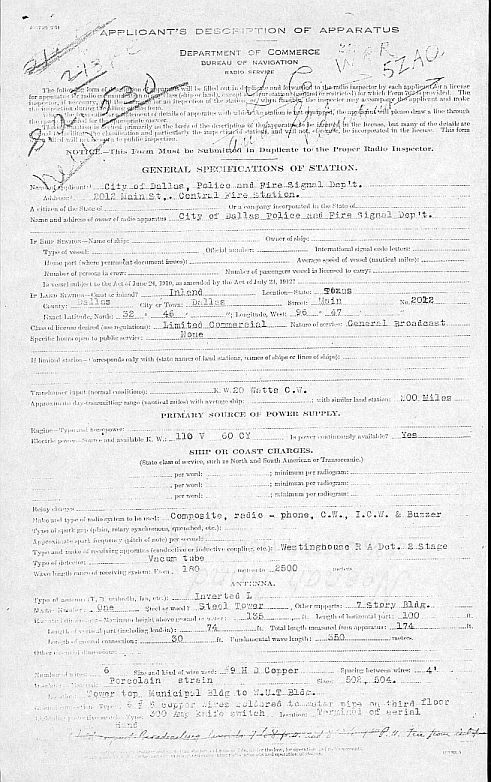 C
C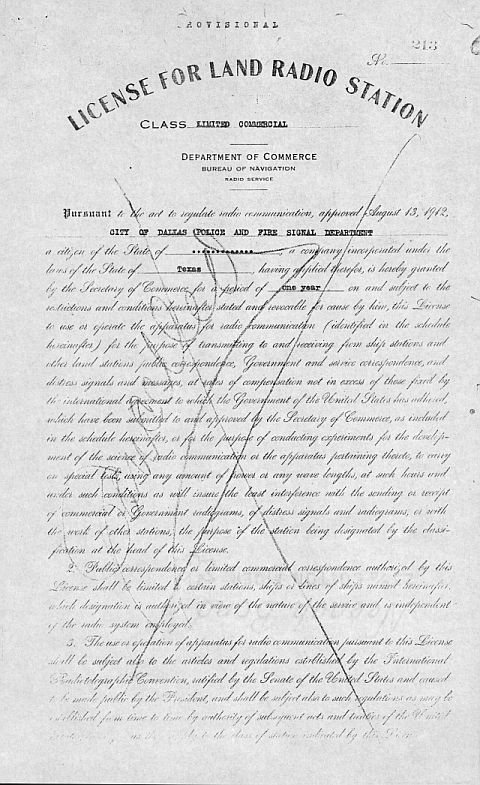 ity-owned radio stations may not be the norm in most broadcast markets, but WRR is not an average radio station. The station was originally housed in the Dallas Fire Department and touted as the latest in firefighter communications. When firefighters had no blazing fires to battle, however, they blazed the broadcast trail by playing music or telling jokes.
ity-owned radio stations may not be the norm in most broadcast markets, but WRR is not an average radio station. The station was originally housed in the Dallas Fire Department and touted as the latest in firefighter communications. When firefighters had no blazing fires to battle, however, they blazed the broadcast trail by playing music or telling jokes.
WRR was the brainchild of inventor Henry "Dad" Garrett, a Police and Fire Signal Superintendent for the City of Dallas who began tinkering with radio in his off-duty hours. Garrett envisioned radio as the modern way for firefighters in the field to communicate. And he sold city officials on the efficiency and safety value his concept could offer.
Application for commercial operator's license for Radio
Station WRR, 1921-1922
From Phonographs to iPods
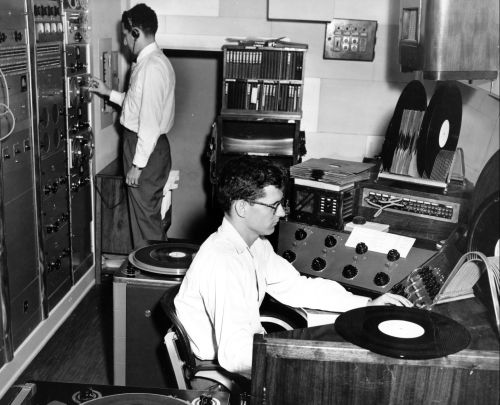 Radio was still a novelty in 1921 and like today’s iPods, most listeners used headsets to tune in on their crystal sets. Until mass-manufactured radio receivers became affordable a few years later, many listeners made their own receivers. After “Dad” Garrett’s system of transmitting fire alarms became firmly established, phonograph records were played during downtime. In time, listeners heard the voice of John Henry Stone announce record titles, initiating the new role of disc jockey. Today, listeners can download WRR programs to their media players and create, in effect, a personal radio station.
Radio was still a novelty in 1921 and like today’s iPods, most listeners used headsets to tune in on their crystal sets. Until mass-manufactured radio receivers became affordable a few years later, many listeners made their own receivers. After “Dad” Garrett’s system of transmitting fire alarms became firmly established, phonograph records were played during downtime. In time, listeners heard the voice of John Henry Stone announce record titles, initiating the new role of disc jockey. Today, listeners can download WRR programs to their media players and create, in effect, a personal radio station.
Playing program transcriptions, WRR studios, 1951
Classical Music with Cutting Edge Technology
 Today, WRR is the only commercial station in Texas that plays classical music 24 hours a day and is also the oldest same-owner station in the U.S. With a tower in Cedar Hill, the 100,000-watt station's listening area spans 100 square miles. WRR now broadcasts in an all-digital format for improved sonic fidelity. Listeners can hear these benefits with a High Definition Radio receiver.
Today, WRR is the only commercial station in Texas that plays classical music 24 hours a day and is also the oldest same-owner station in the U.S. With a tower in Cedar Hill, the 100,000-watt station's listening area spans 100 square miles. WRR now broadcasts in an all-digital format for improved sonic fidelity. Listeners can hear these benefits with a High Definition Radio receiver.
General Radio power level indicator
(AC voltmeter), circa 1935
Ready To Go
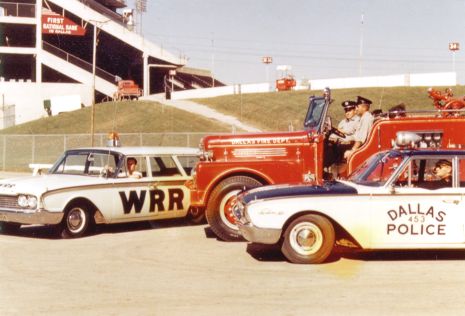 By the 1950s, portable equipment made remote broadcasts possible. In 1958, the City Council approved the purchase of state of the art remote consoles built by the Carver Sound Equipment Company, and at one time also used FM remote equipment manufactured by Dallas-based Collins Radio.
By the 1950s, portable equipment made remote broadcasts possible. In 1958, the City Council approved the purchase of state of the art remote consoles built by the Carver Sound Equipment Company, and at one time also used FM remote equipment manufactured by Dallas-based Collins Radio.
WRR station wagon beside the Cotton Bowl,
Fair Park, mid-1950s
What Are These Big Records?
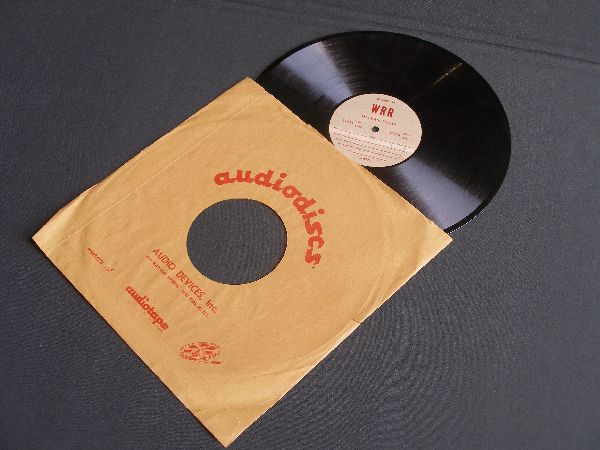 Before magnetic tape came into use in the early 1950s and later recording formats were developed, radio stations utilized the process of electrical transcription to record live programs for the purpose of delayed broadcast. The format was normally 16 inch (406 mm) diameter "transcription disks". These records were made of shellac, acetate, or lacquer-coated aluminum, and were recorded at the "professional speed" of 33 1/3 rpm.
Before magnetic tape came into use in the early 1950s and later recording formats were developed, radio stations utilized the process of electrical transcription to record live programs for the purpose of delayed broadcast. The format was normally 16 inch (406 mm) diameter "transcription disks". These records were made of shellac, acetate, or lacquer-coated aluminum, and were recorded at the "professional speed" of 33 1/3 rpm.
Transcription disk of a locally-produced WRR
program from the early 1950s
WRR is On the Air!
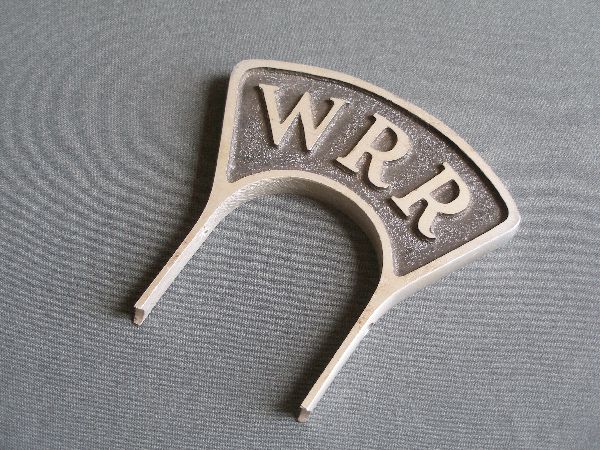 WRR's aluminum microphone flag, circa 1930s. Flags are affixed near a microphone to identify the radio station or network. This flag was used in WRR's studios on a stationary mic stand that would have sat on a tabletop. Flags have changed with the times and today are usually square plastic frames that adorn a reporter's handheld mic and display the station logo.
WRR's aluminum microphone flag, circa 1930s. Flags are affixed near a microphone to identify the radio station or network. This flag was used in WRR's studios on a stationary mic stand that would have sat on a tabletop. Flags have changed with the times and today are usually square plastic frames that adorn a reporter's handheld mic and display the station logo.
Aluminum WRR microphone flag, unknown date.
Courtesy CIS Department
Different Disc Jockeys, Different Formats
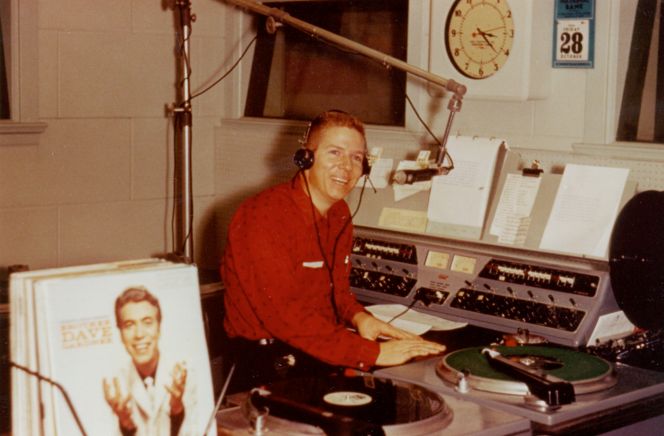 There have been many different programming formats over the last 85 years and hundreds of types of programs on both the FM and former AM bandwidths: Public Service (1920-1927), Talk (1927-early 1970s), Contemporary Oldies (early 1970s-1974), and All News/Talk (1974-1978). It was the first news/talk station in Dallas, the first station to regularly feature traffic reports (Fina Traffic Report, in 1962); the flagship station for the Dallas Rebels and SMU basketball teams, and the Dallas Texans football team (1960-1963, until their move to Kansas City to become the Chiefs). Among the many programs on WRR AM and FM were Kat's Karavan Show, Blues Karavan; Jukebox Serenade, The Al Jones Show, The Laurel Ornish Show, Who's Who in Radio, Charlie the Collector Show, Nancy Goodman Show, Kiddie's Club, Pet Time, and Coffee Time.
There have been many different programming formats over the last 85 years and hundreds of types of programs on both the FM and former AM bandwidths: Public Service (1920-1927), Talk (1927-early 1970s), Contemporary Oldies (early 1970s-1974), and All News/Talk (1974-1978). It was the first news/talk station in Dallas, the first station to regularly feature traffic reports (Fina Traffic Report, in 1962); the flagship station for the Dallas Rebels and SMU basketball teams, and the Dallas Texans football team (1960-1963, until their move to Kansas City to become the Chiefs). Among the many programs on WRR AM and FM were Kat's Karavan Show, Blues Karavan; Jukebox Serenade, The Al Jones Show, The Laurel Ornish Show, Who's Who in Radio, Charlie the Collector Show, Nancy Goodman Show, Kiddie's Club, Pet Time, and Coffee Time.
Above: Dennis Pitchford, marketing director for the Dallas Symphony Orchestra, WRR studios, 1959. The album in the foreground is Brother Dave Gardner's comedy album Rejoice, Dear Hearts!.
The first person to call in wins...
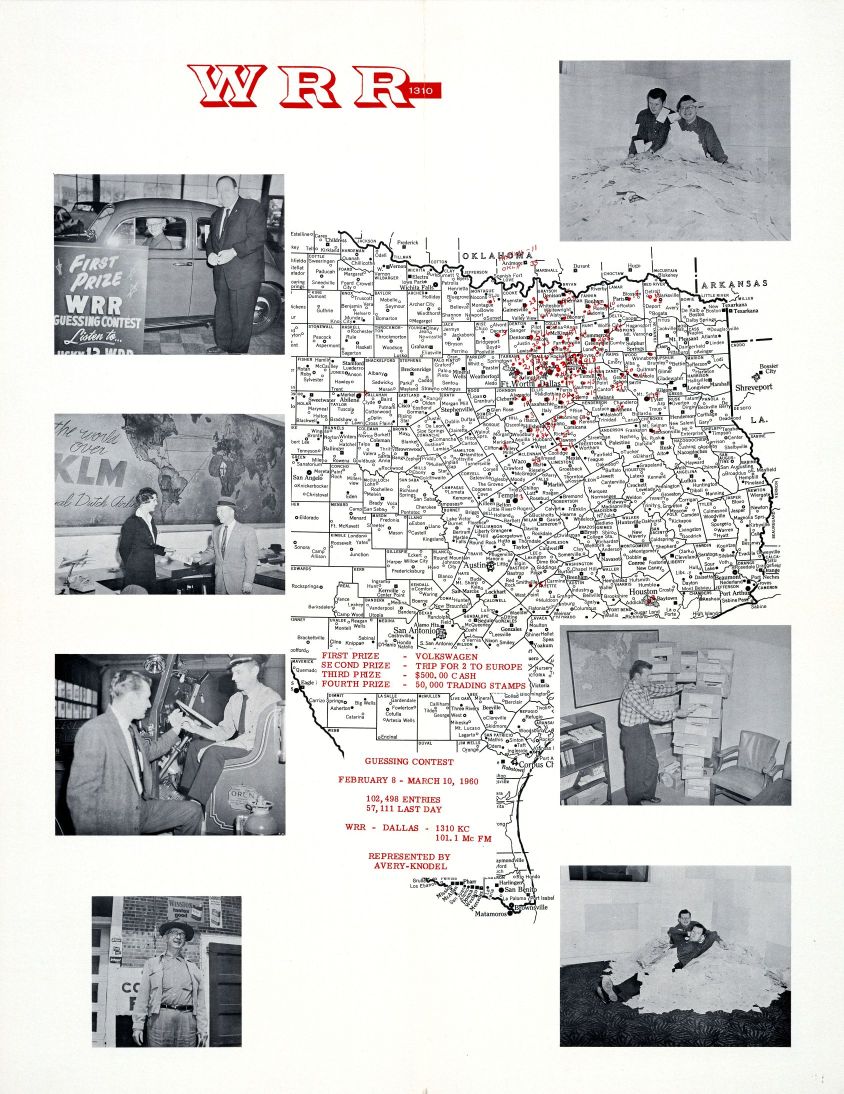 Radio contests are just as big today as they were in the past. In the early days of radio, stations wanting to build ratings scrambled to outdo one another with stunts and contests. Some stations held quiz contests to win prizes; other stations held money giveaways. WRR was no different and has held hundreds of contests through the years for chances to win vacations, dinners, and more.
Radio contests are just as big today as they were in the past. In the early days of radio, stations wanting to build ratings scrambled to outdo one another with stunts and contests. Some stations held quiz contests to win prizes; other stations held money giveaways. WRR was no different and has held hundreds of contests through the years for chances to win vacations, dinners, and more.
WRR contest poster, circa 1962
Your Radio Spot Here
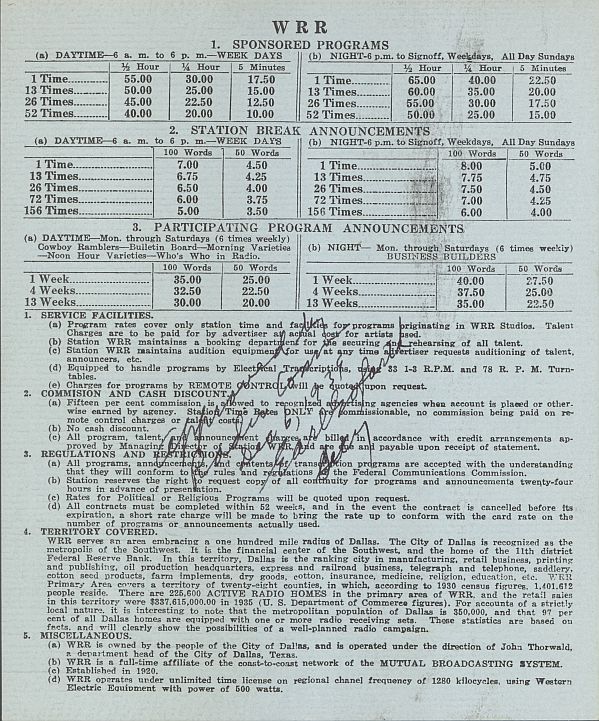 Rate cards contain prices and descriptions for the various advertising placement options available from a radio station or other media outlet. Instead of operating at taxpayer expense, WRR is funded solely by advertising revenue.
Rate cards contain prices and descriptions for the various advertising placement options available from a radio station or other media outlet. Instead of operating at taxpayer expense, WRR is funded solely by advertising revenue.
WRR rate card, 1939
More Equipment
Vintage equipment used at WRR or typical of WRR. Non-Archives artifacts courtesy of Communication and Information Services Department (CIS).
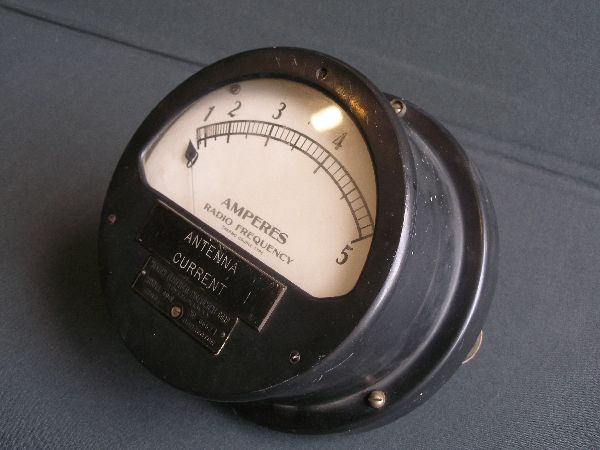
| |
|
Weston Electrical Instrument Corp.antenna current meter for tuning antennas, circa 1940 [CIS]
| |
General Radio microvolter (precision attenuator) 546-C, circa 1955
[Municipal Archives]
|

| |
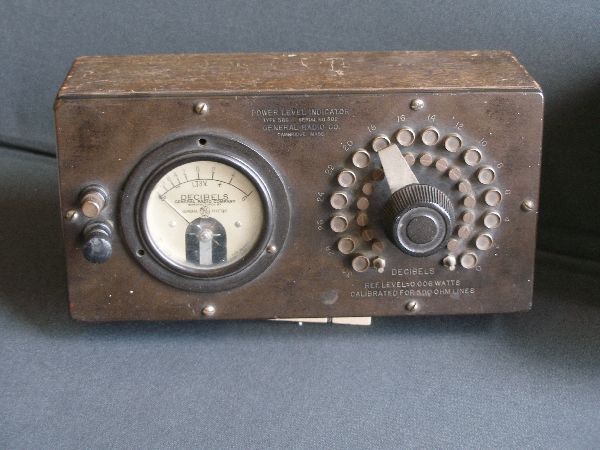
|
|
Federal Telephone and Radio Corp. water cooled triode transmitting tube, early 1930s
[CIS] | |
General Radio power level indicator (AC voltmeter), circa 1935
[Municipal Archives] |
Original exhibition date: March 2006